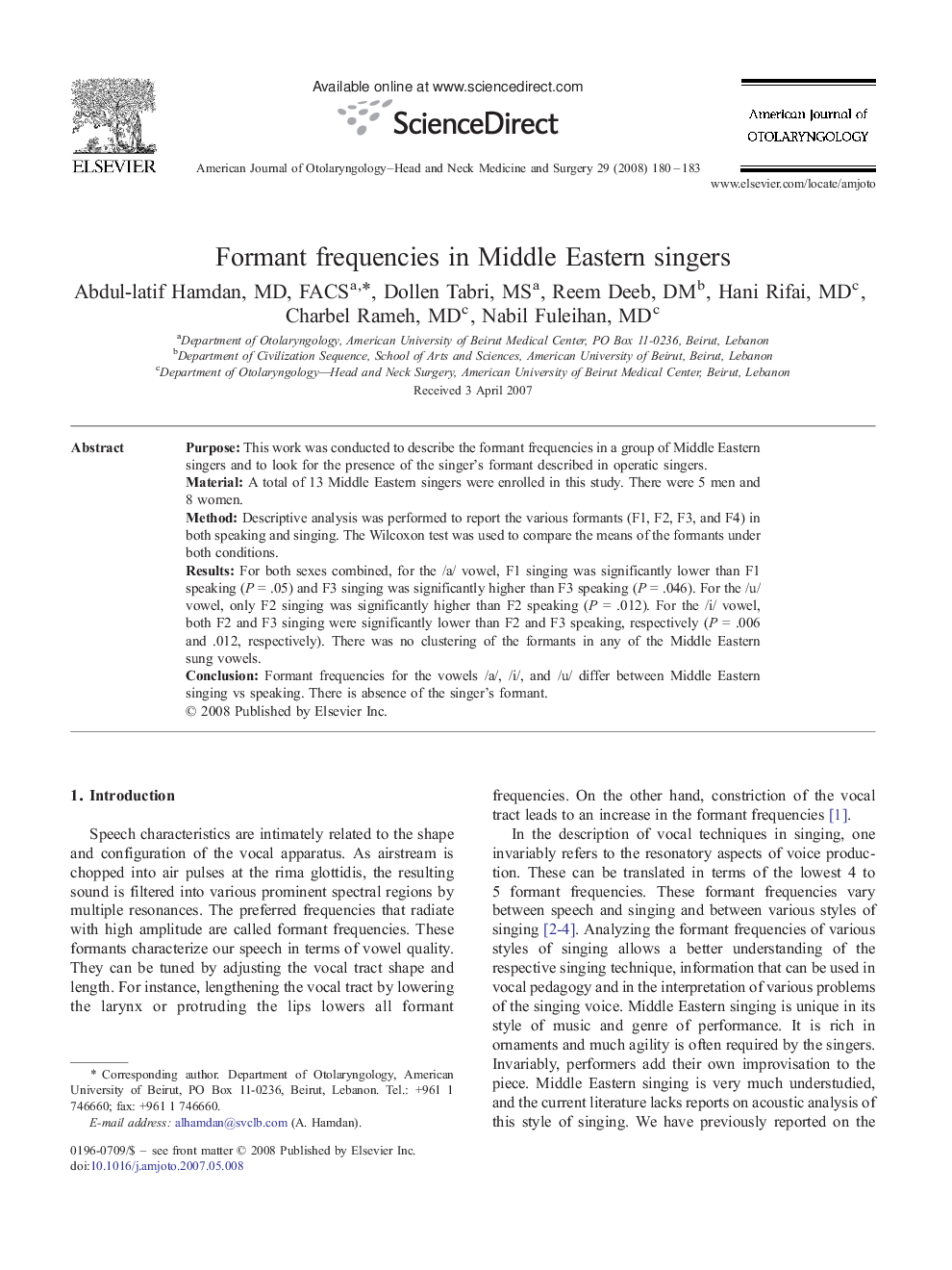| Article ID | Journal | Published Year | Pages | File Type |
|---|---|---|---|---|
| 4104409 | American Journal of Otolaryngology | 2008 | 4 Pages |
PurposeThis work was conducted to describe the formant frequencies in a group of Middle Eastern singers and to look for the presence of the singer's formant described in operatic singers.MaterialA total of 13 Middle Eastern singers were enrolled in this study. There were 5 men and 8 women.MethodDescriptive analysis was performed to report the various formants (F1, F2, F3, and F4) in both speaking and singing. The Wilcoxon test was used to compare the means of the formants under both conditions.ResultsFor both sexes combined, for the /a/ vowel, F1 singing was significantly lower than F1 speaking (P = .05) and F3 singing was significantly higher than F3 speaking (P = .046). For the /u/ vowel, only F2 singing was significantly higher than F2 speaking (P = .012). For the /i/ vowel, both F2 and F3 singing were significantly lower than F2 and F3 speaking, respectively (P = .006 and .012, respectively). There was no clustering of the formants in any of the Middle Eastern sung vowels.ConclusionFormant frequencies for the vowels /a/, /i/, and /u/ differ between Middle Eastern singing vs speaking. There is absence of the singer's formant.
